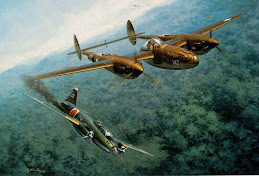
Although I have never experienced flight in a P-51 D, I long for the day when I can climb through the clouds and skim the sea in my very own Mustang. There is a certain awe about the classic planes. They have a history in aviation that cannot be ignored. Their value to the world must be recognized. An English Spitfire or a Japanese Zero should be respected as some of these classics. A B-17 Flying Fortress should be respected for its service in countless missions over Germany and Italy.
I feel that today's society is so ensconced in engineering that we continue to forget the past. We continue to create fighters from the F-4 to the F-106 but I think the general populous is forgetful of the days of the P aircraft.
It seems to me that there would be something exhilarating about being in total control of the aircraft, and having nothing between you and the the passing mountains but a glass window and a stick. Believe it or not, there were days when all there was to control an airplane was the control stick , a hydraulics system, and the intuitiveness of the pilot. But, alas, it is no more. There are computers in every modern airplane that determine how the plane moves based on control stick input.
So remember and respect the days of the WWII aircraft, when there was only pilot skill maneuvering those old tin cans.
 P-51 D Mustang
P-51 D Mustang Spitfire
Spitfire Boeing 747
Boeing 747
 P-51 D Mustang
P-51 D Mustang Spitfire
Spitfire Boeing 747
Boeing 747




